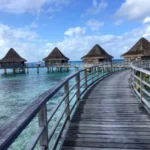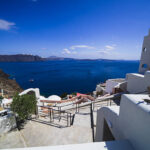The Eiffel Tower, located in the heart of Paris, France, is one of the most iconic and recognizable landmarks in the world. Its towering presence has become a symbol of both the city and the country, attracting millions of visitors annually from all corners of the globe.
History and Construction
The Eiffel Tower was designed by the French engineer Gustave Eiffel and his company for the 1889 Exposition Universelle (World’s Fair), which was organized to celebrate the 100th anniversary of the French Revolution. Eiffel’s design was initially met with resistance, with many Parisians and artists criticizing it for its unusual and industrial appearance. However, the tower’s construction went ahead, and it was completed in March 1889, standing at 324 meters (1,063 feet) tall, making it the tallest man-made structure in the world at the time.
The construction took just over two years, and it required over 18,000 individual iron pieces, which were assembled using more than 2.5 million rivets. The tower’s metal framework, made from wrought iron, was a groundbreaking achievement in structural engineering. It was initially intended to stand for just 20 years, but due to its utility as a radio transmission tower, it was allowed to remain standing and later became a permanent fixture.
Design and Architecture
The Eiffel Tower’s design is a prime example of the Art Nouveau movement, with its elegant yet functional structure. The tower is composed of four massive legs, which curve inward as they rise, and are connected by a network of horizontal beams. The use of iron was revolutionary at the time, as it allowed for a lighter structure without sacrificing strength. This innovative use of materials was one of the key reasons the tower was able to reach such unprecedented heights.
The Eiffel Tower is divided into three levels:
- First Level: Located 57 meters (187 feet) above the ground, this level features a large observation deck, a restaurant, and a glass floor that allows visitors to look straight down. It also houses the Cité de l’Architecture et du Patrimoine museum.
- Second Level: Situated 115 meters (377 feet) above the ground, the second level offers a more expansive view of Paris. The Le Buffet restaurant is located here, and the observation deck allows for breathtaking views of the Seine River, Notre-Dame Cathedral, and other famous Parisian landmarks.
- Third Level: The highest level of the Eiffel Tower stands at 276 meters (906 feet). This level is home to a small observation area and a champagne bar, offering stunning panoramic views of Paris. On clear days, you can see for miles across the city and beyond.
Visitor Experience
Visiting the Eiffel Tower is an unforgettable experience. With its incredible views, rich history, and architectural beauty, the tower provides an unparalleled way to take in the city of lights. Tourists can access the tower by elevators or, for the more adventurous, stairs. The climb via stairs is an excellent way to experience the tower more intimately, and visitors can stop at the first and second levels along the way to catch their breath and enjoy the views.
For those who wish to skip the lines, there is the option to book tickets in advance. The Eiffel Tower also offers night tours, where visitors can see the tower illuminated in dazzling lights. Every evening, the tower sparkles for 5 minutes every hour on the hour, creating a mesmerizing sight that is widely regarded as one of the most beautiful spectacles in the world.
Cultural Significance
Over the years, the Eiffel Tower has become more than just an architectural feat; it is a symbol of French ingenuity, pride, and culture. It has been featured in countless movies, books, and artworks, solidifying its place as one of the most recognizable and romanticized landmarks on earth. The tower’s silhouette can be seen in almost every image of Paris, making it synonymous with the city itself.
Moreover, the Eiffel Tower has also become a center for science and technology. Throughout the years, it has been used for various scientific experiments, including radio and television transmission. In the early 20th century, Guglielmo Marconi used the tower to send the first transatlantic radio signal, and the tower was instrumental in radio broadcasting in the following decades.
Interesting Facts about the Eiffel Tower
- Height Variations: The height of the Eiffel Tower changes slightly with the seasons due to the expansion and contraction of the metal as temperatures fluctuate.
- Ownership: The Eiffel Tower is technically not owned by the French government, but rather by the city of Paris. However, it is operated and maintained by the Société de la Tour Eiffel.
- Famous Visitors: Throughout history, many famous personalities have visited the Eiffel Tower, including artists, world leaders, and even astronauts. Thomas Edison, for example, visited the tower and signed his name on one of its columns.
- Cultural Icon: The Eiffel Tower is often used in fashion, art, and advertising. It’s also become a symbol of romance, often featured in films and weddings.
Modern-Day Eiffel Tower
Today, the Eiffel Tower continues to serve as one of the most visited paid monuments in the world, attracting approximately 7 million visitors each year. The tower is constantly updated with modern amenities, including Wi-Fi and interactive exhibits, while still preserving its historic charm. It remains a tribute to the vision of Gustave Eiffel and a marvel of engineering and design.
For those looking to explore Paris, the Eiffel Tower is a must-see attraction, offering unparalleled views of the city and an unforgettable experience. Whether you visit during the day or night, it stands as an enduring symbol of Paris and continues to inspire awe and admiration.






